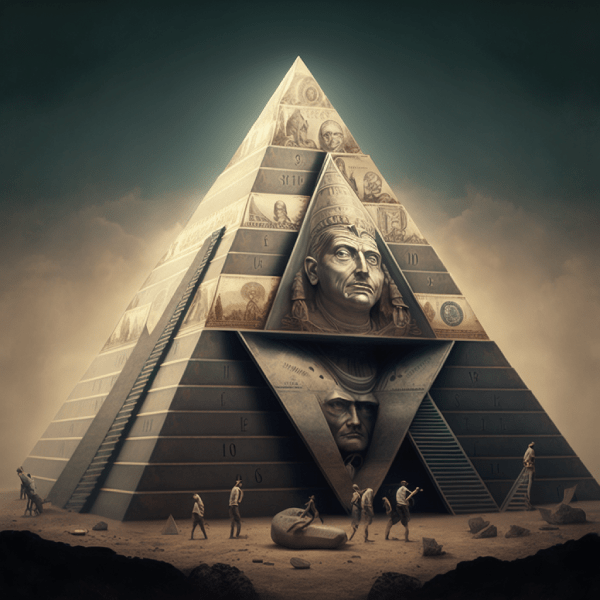Introduction
In an era where sustainability has become an urgent global priority, technological advancements have the potential to shape a more sustainable future. The evolution of the internet, specifically the shift from Internet 2.0 to Web 3.0, holds tremendous promise for promoting sustainable development.
Web 3.0, also known as the Semantic Web or the Decentralized Web, is an emerging paradigm that aims to transform the way we interact with information, technology, and each other. In this blog post, we will explore the replacement of Internet 2.0 with Web 3.0 in the context of sustainable development and discuss the potential benefits and challenges associated with this transition.
Understanding Internet 2.0 and its limitations
Internet 2.0, characterized by social media, e-commerce platforms, and centralized service providers, has revolutionized the way we communicate, collaborate, and consume information. However, it has also brought about several sustainability challenges. Internet 2.0 relies heavily on data centers that consume vast amounts of energy and contribute to greenhouse gas emissions.
Furthermore, the concentration of power in the hands of a few dominant corporations raises concerns regarding data privacy, security, and equity. These limitations call for a paradigm shift that fosters sustainable practices and ensures a more inclusive digital ecosystem.
Introducing Web 3.0: the foundations of sustainability
Web 3.0 represents a new generation of the internet, focused on decentralization, interoperability, and user empowerment. It leverages emerging technologies such as blockchain, artificial intelligence, and the Internet of Things (IoT) to create a more sustainable and user-centric digital landscape. Here are some key aspects of Web 3.0 and their implications for sustainable development:
Decentralization: Web 3.0 promotes the decentralization of data, applications, and services. Instead of relying on centralized servers, it utilizes distributed systems and blockchain technology to ensure data integrity, security, and resilience. Decentralization enhances privacy, reduces the risk of data breaches, and empowers users to have greater control over their personal information.
Interoperability: Web 3.0 aims to enable seamless interoperability between different applications and platforms. This interoperability fosters collaboration and sharing of data and resources, enabling innovative solutions to complex sustainability challenges. For instance, IoT devices can collect and share data with various applications, facilitating smart energy management, efficient resource allocation, and real-time environmental monitoring.
Smart contracts and Tokenization: Web 3.0 leverages smart contracts, self-executing agreements powered by blockchain, to automate transactions and ensure trust among parties. This technology enables the creation of tokenized ecosystems where participants are incentivized to engage in sustainable practices. For example, blockchain-based carbon credits can reward individuals and organizations for reducing their carbon footprint, driving the transition to a low-carbon economy.
User empowerment: Web 3.0 emphasizes user sovereignty and empowerment. Individuals have greater ownership of their digital identity and data, enabling them to make informed decisions about their online presence. User-centric platforms built on Web 3.0 principles can foster digital inclusivity and provide marginalized communities with access to resources, information, and opportunities.
Challenges and considerations
While the transition from Internet 2.0 to Web 3.0 holds immense potential for sustainable development, several challenges need to be addressed.
Web 3.0 technologies, such as blockchain, can be complex to implement and scale. Efforts are needed to simplify user interfaces, improve scalability, and enhance energy efficiency to ensure widespread adoption.
The emergence of Web 3.0 raises questions about the existing regulatory frameworks and governance structures. Policymakers need to establish clear guidelines that balance innovation, privacy, security, and sustainability.
As we embrace Web 3.0, it is crucial to bridge the digital divide and ensure that all communities have equal access to the benefits of this new paradigm. Efforts must be made to provide affordable internet access and promote digital literacy.
Conclusion
The replacement of Internet 2.0 with Web 3.0 presents a transformative opportunity to drive sustainable development in the digital age. By embracing decentralization, interoperability, and user empowerment, Web 3.0 can address the environmental, social, and economic challenges posed by Internet 2.0.
However, it is essential to navigate the associated challenges, promote collaboration between stakeholders, and ensure the inclusivity and equitable distribution of its benefits. With the right strategies and collective efforts, Web 3.0 has the potential to revolutionize our digital ecosystem, paving the way for a more sustainable and prosperous future.
While Web 3.0it is still in its early stages, there are already several real working applications. Here are a few examples:
- Filecoin: Filecoin is a decentralized storage network that allows users to rent out their unused hard drive space and earn Filecoin cryptocurrency in return. It creates a decentralized marketplace for storage, incentivizing individuals and organizations to contribute their resources and support the network. This application showcases the concept of decentralized storage and the ability to leverage underutilized resources for a more efficient and resilient storage infrastructure.
- Brave Browser: Brave is a privacy-focused web browser that rewards users with Basic Attention Token (BAT) for engaging with privacy-respecting advertisements. It aims to address the privacy concerns and data exploitation prevalent in traditional internet advertising models. Brave blocks intrusive ads and trackers by default, allowing users to have greater control over their online experience while providing a way for content creators to monetize their work through the use of BAT tokens.
- Golem: Golem is a decentralized marketplace for computing power. It enables users to rent out their idle computing resources or utilize additional processing power for tasks such as rendering CGI, machine learning, and scientific simulations. Golem aims to create a global network of computers, providing cost-effective and scalable computing power while reducing the reliance on centralized data centers.
- Augur: Augur is a decentralized prediction market platform built on the Ethereum blockchain. It allows users to create and trade in prediction markets on various topics, ranging from sports outcomes to political events. Augur leverages the wisdom of crowds to forecast future events and provides a decentralized alternative to traditional prediction markets, offering transparency, security, and the opportunity for users to profit from accurate predictions.
These examples represent just a glimpse of the potential applications within the Web 3.0 ecosystem. As the technology continues to evolve and mature, we can expect to see more innovative and impactful applications that leverage decentralization, blockchain, and user empowerment to drive sustainable development and reshape the digital landscape.



